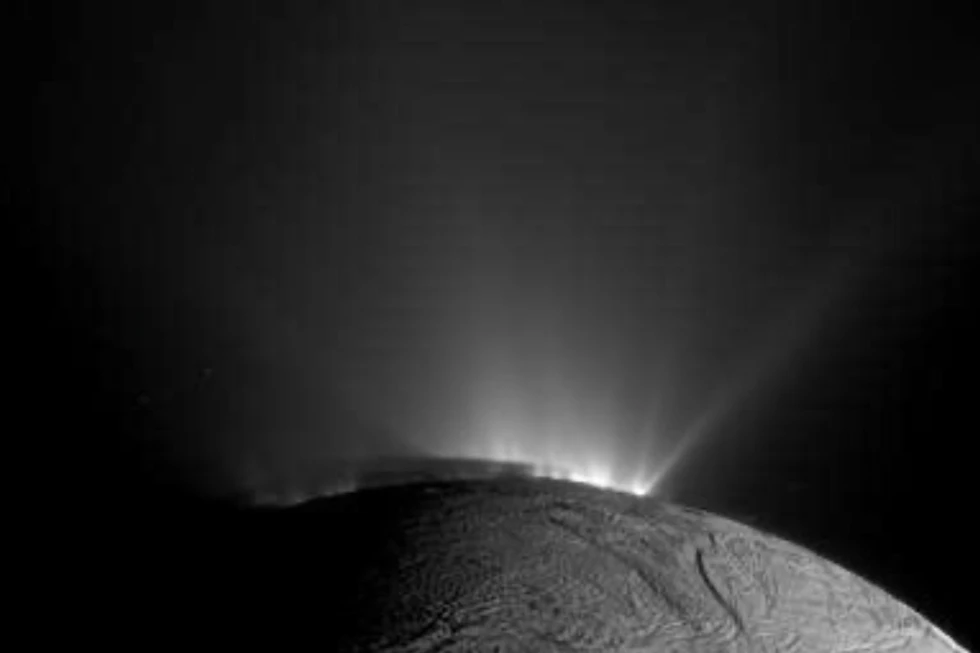New Study Suggests Favorable Conditions for Life at Saturn’s Moon Enceladus
s Scientists have identified new organic compounds in icy geysers erupting from Saturn’s moon Enceladus, strengthening the case that the small, ocean-covered moon may have the right conditions to support life. The findings, published in Nature Astronomy, are based on data collected in 2008 by NASA’s Cassini spacecraft during a high-speed flyby.
Enceladus, one of Saturn’s 274 moons, has long fascinated astronomers because of its underground ocean and powerful plumes of water vapor and ice particles that shoot out from fractures near its south pole. While researchers emphasize that no evidence of life has been found, the discovery of complex organics adds weight to the idea that Enceladus is “habitable.”
“Being habitable and being inhabited are two very different things. We believe that Enceladus is habitable, but we do not know if life is indeed present,” explained Fabian Klenner of the University of Washington, one of the study’s co-authors.
Cassini’s Legacy Reveals New Organic Compounds
The new findings emerged from a fresh analysis of tiny ice grains Cassini encountered as it flew directly through Enceladus’ geysers. Unlike older particles that had drifted into Saturn’s outer rings and been exposed to space radiation for years, the fresh grains provided a much clearer chemical snapshot.
Traveling at nearly 40,000 mph (64,800 kph), the grains struck Cassini’s dust analyzer with enough force to expose their hidden chemistry. Researchers detected organic molecules previously observed in older samples, confirming their oceanic origin, as well as entirely new compounds pointing directly to Enceladus’ subsurface sea.
“These molecules originate from the subsurface ocean of Enceladus, enhancing its habitability potential,” said lead author Nozair Khawaja of the Free University of Berlin.
A Hidden Ocean World Beneath the Ice
Enceladus is a relatively small moon, just 310 miles (500 kilometers) across, but scientists believe it harbors a global ocean beneath its icy crust. Its rocky core may host hydrothermal vents similar to those found in Earth’s Arctic seas, providing chemical energy that could, in theory, fuel microbial life.
The moon’s spectacular jets, capable of spewing water vapor and ice particles thousands of miles into space, act like natural space probes—launching material from deep within its ocean into regions where spacecraft like Cassini could collect and study it.
This makes Enceladus one of the most compelling places in the solar system to search for evidence of extraterrestrial biology, alongside Jupiter’s moon Europa.
Calls for Future Missions to Explore Enceladus
The new research has sparked fresh calls for follow-up missions to Enceladus. While Cassini ended its mission in 2017, deliberately plunging into Saturn’s atmosphere, space agencies worldwide are considering new ways to return. The European Space Agency has early plans for a future landing mission, while China has also proposed a similar project.
Meanwhile, NASA is preparing its Europa Clipper spacecraft, due to arrive at Jupiter in 2030, to perform dozens of flybys of Europa—another icy moon with a hidden ocean. ESA’s Juice mission is already en route to Jupiter to study Europa and two additional moons that may host subsurface seas.
“Underground oceans on moons are perhaps the best candidates for the emergence of extraterrestrial life in our solar system. This work only confirms the need for further studies,” said Nigel Mason, a physics professor at the University of Kent who was not part of the study.

















